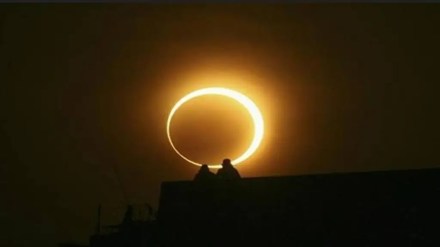Astronomy enthusiasts are in for a treat on March 29, 2025, as a partial solar eclipse will illuminate the skies. On the heels of a total lunar eclipse, this spectacle will provide a breathtaking visual experience, especially for observers in the northeastern United States and some parts of Canada.
The partial solar eclipse will make the interesting illusion that of the moon “biting” into the sun, making a crescent-like shape at sunrise—a sight not to be missed.
What is a partial solar eclipse?
Partial solar eclipse happens when the moon blocks part of the sun’s light as it moves between the Earth and the sun. Contrary to a total solar eclipse, in which the moon covers the entire sun, a partial eclipse exposes a portion of the sun and creates the crescent effect.
Though less dramatic than a total eclipse, this partial solar eclipse will offer a breathtaking and stunning visual phenomenon.
Where and when to watch the solar eclipse in 2025
According to Space.com, the partial solar eclipse will take place between 4:50 AM and 8:43 AM ET on March 29, 2025. More than 800 million people will have the opportunity to witness the event, with the best viewing locations found in the northeastern U.S.
The eclipse will be visible in the following regions, with the most notable viewing times as reported by USA Today:
- New York: 6:35 AM to 7:12 AM
- Massachusetts: 6:27 AM to 7:08 AM
- Maine: 6:13 AM to 7:17 AM
- Pennsylvania: 6:46 AM to 7:08 AM
- New Jersey: 6:43 AM to 7:06 AM
- Virginia: 6:50 AM to 7:03 AM
The eclipse will also be visible in Connecticut, Delaware, Maryland, Rhode Island, New Hampshire, Vermont, West Virginia, and the District of Columbia. Keep in mind that visibility will depend on the specific location and weather conditions.
The science behind a partial solar eclipse
During a partial solar eclipse, the moon covers only part of the sun’s surface. The amount of the sun covered will vary based on where you’re located. As the sun rises, the eclipse will appear more pronounced, and the sun will take on a crescent shape before returning to its full brightness.
Eye safety: How to view the eclipse safely
Although a lunar eclipse may be viewed without protection, direct gaze at a solar eclipse without correct protection can result in serious damage to the eye, referred to as “eclipse blindness.”
To view the partial solar eclipse safely, you need to wear eclipse glasses that are ISO 12312-2 certified. These glasses are specially made to block dangerous ultraviolet (UV) rays. Regular sunglasses, even very dark ones, will not be enough. Ensure you use certified glasses from known manufacturers, as advised by the American Astronomical Society and NASA.
Frequently asked questions
What will happen on March 29, 2025?
On March 29, 2025, there will be a deep partial solar eclipse visible over most of the Northern Hemisphere. Although it will not include a total eclipse (where the moon completely covers the sun), it will still be a stunning celestial spectacle to millions of observers in Europe, North America, and Africa.
How long does a total solar eclipse last?
Total solar eclipses usually last between 10 seconds and approximately 7.5 minutes. The longest total eclipse in the next 12,000 years will take place on July 16, 2186, and will last an impressive 7 minutes and 29 seconds.
Mark your calendars for March 29, 2025, and prepare to witness a one-of-a-kind, unforgettable heavenly event that will leave you mesmerized. Do remember to view it safely, and indulge in the awe of this natural spectacle!
